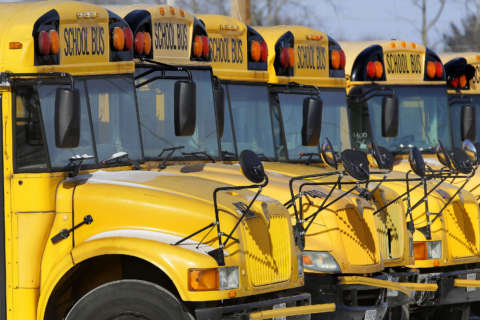WASHINGTON (AP) — One of the most important signs of how people will vote is how much education they have. Voters who attended college are much more likely to back Democrats, while those without degrees usually go Republican.
So as The Associated Press looked for places to explore this topic, we focused our attention on Centre County, Pennsylvania. The area is home to Pennsylvania State University, making it a classic blue dot in a red region.
But the county is attracting more people with college degrees, and small towns in the area are going from red to purple and purple to blue. Nothing is certain in this tumultuous election year, but the changes could help Kamala Harris counter Donald Trump’s margins in more rural areas. Here’s what we found in Centre County.
A traditional swing county is swinging in one direction
Centre County has 160,000 residents in the middle of Pennsylvania, and it’s been a traditional swing area over the years. But that’s changed, with Democratic presidential candidates winning consistently in recent elections and Democrats maintaining control over the county board of commissioners.
The shift is reflected in data on education. A decade ago, 39.4% of residents had a four-year college degree or more. Last year, it was up to 47.6%. County leaders are pushing to diversify the economy beyond Penn State, focusing on new attractions like an iron man triathlon and developments like expanded healthcare facilities.
‘Boomeranging’ back to Centre County
Mark Higgins, chair of the Centre County Board of Commissioners, said the area’s growth is fueled by “boomerangs.” That means people who grew up or went to school in the county are moving back to raise their families.
Cost of living is an important factor. People are moving from bigger cities to State College because it’s more affordable, and other people are moving from State College to the surrounding towns because it’s even cheaper. The result is that the blue dot is expanding in the county.
“You see an expansion of the university community and economy,” said Ezra Nanes, the Democratic mayor of State College. “It touches all parts of the county.”
Big change has come to small towns
Penn State is orbited by a series of small towns which have long had a conservative reputation. However, that’s been slowly changing.
Voters in Bellefonte, which has 6,000 residents, backed Trump in 2016 but supported Joe Biden in 2020. Once a struggling small town, it’s seen a wave of investment and new arrivals who have brought more liberal politics.
The change isn’t everywhere though. Philipsburg, with less than 3,000 residents, hasn’t yet seen the same renaissance. The decline of coal mining has sapped the town of jobs, and voters there chose Trump over Biden in 2020. “It’s a cute little town. It just needs help,” said Brittney Tekely, 31, who runs her own barber shop.
Campaigns hunting for votes
Democrats believe they can run up the score in Centre County. Their plans include engaging the left-leaning student population, which is vast but sometimes unresponsive during elections. There’s also an aggressive canvassing operation in the area. “Centre County could have thousands more votes than we did in 2020 or 2016,” said Abbey Carr, executive director of the county’s Democratic Party.
Republicans aren’t writing off the campus population, and they’ve held events geared toward energizing right-leaning students. Kush Desai, the Trump campaign’s Pennsylvania spokesman, said they’re doing outreach at college football tailgates and focusing on winning votes from young men who are frustrated with progressive culture. “A lot of people who are rubbing elbows are starting to chip away and come to our side instead,” he said.
Copyright © 2025 The Associated Press. All rights reserved. This material may not be published, broadcast, written or redistributed.






